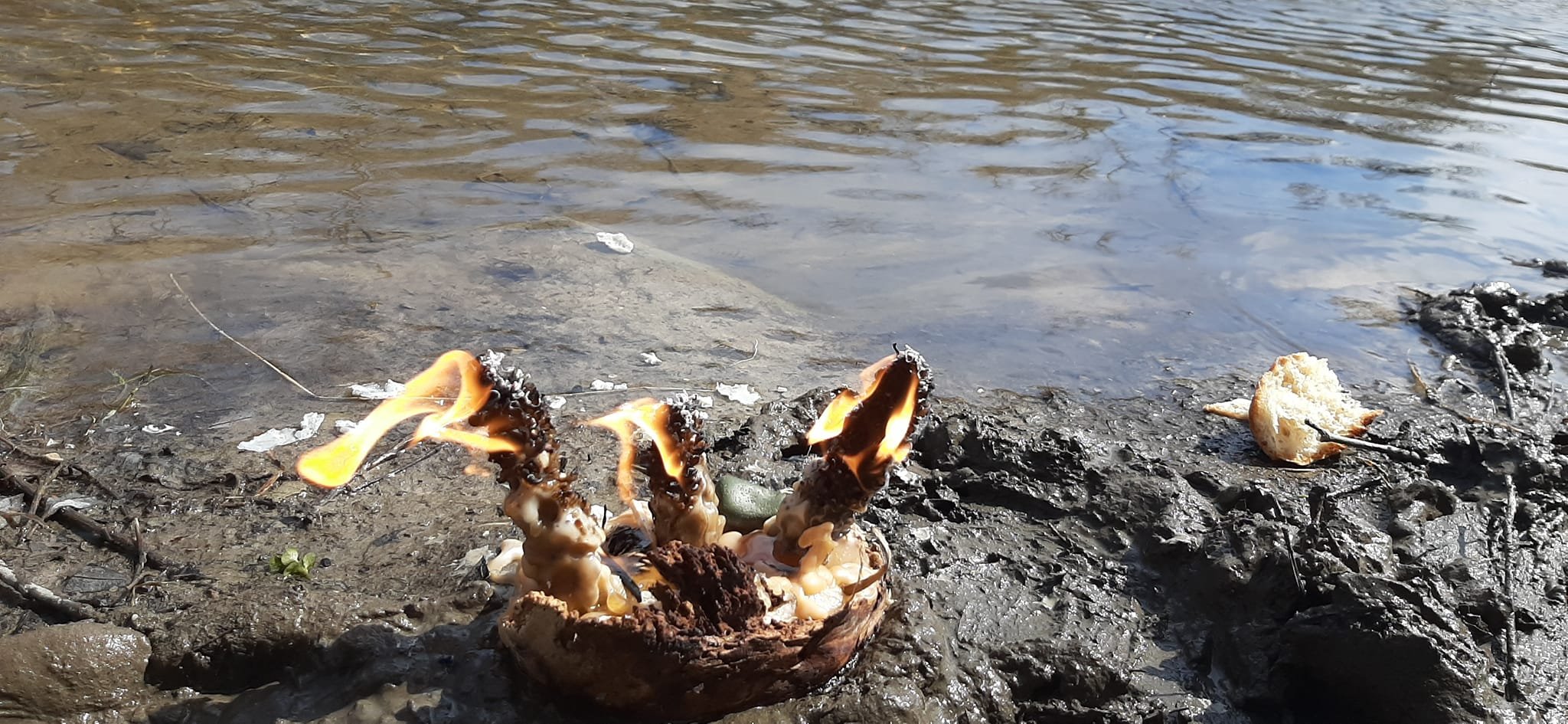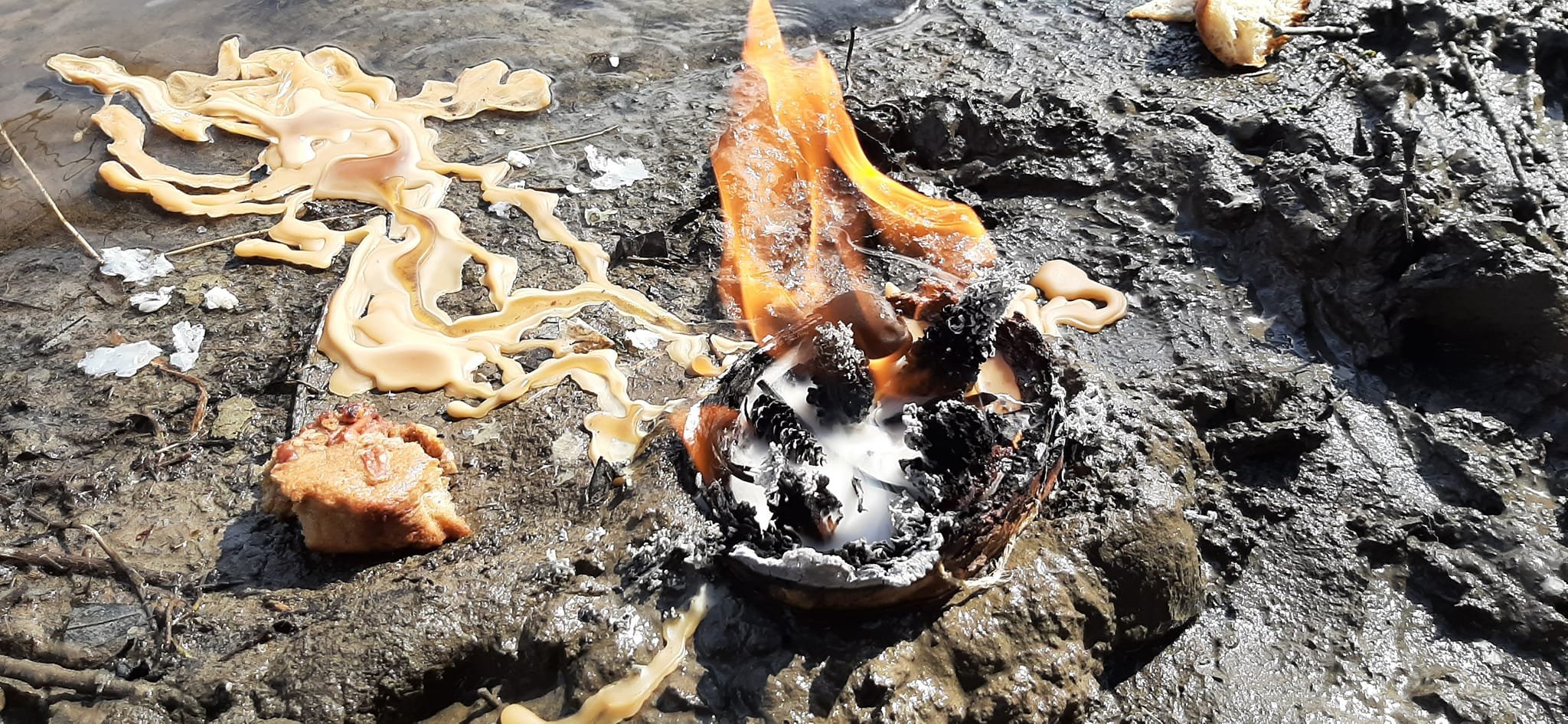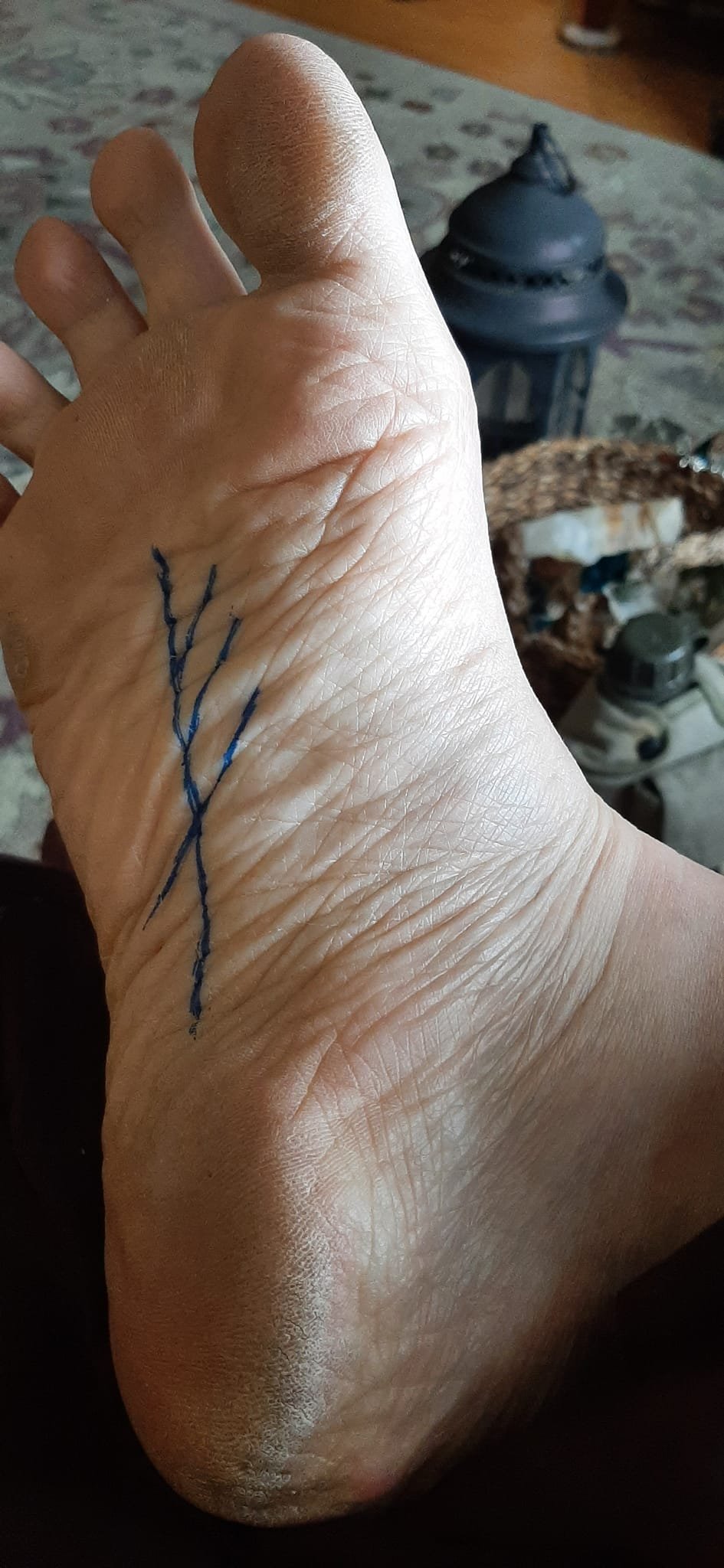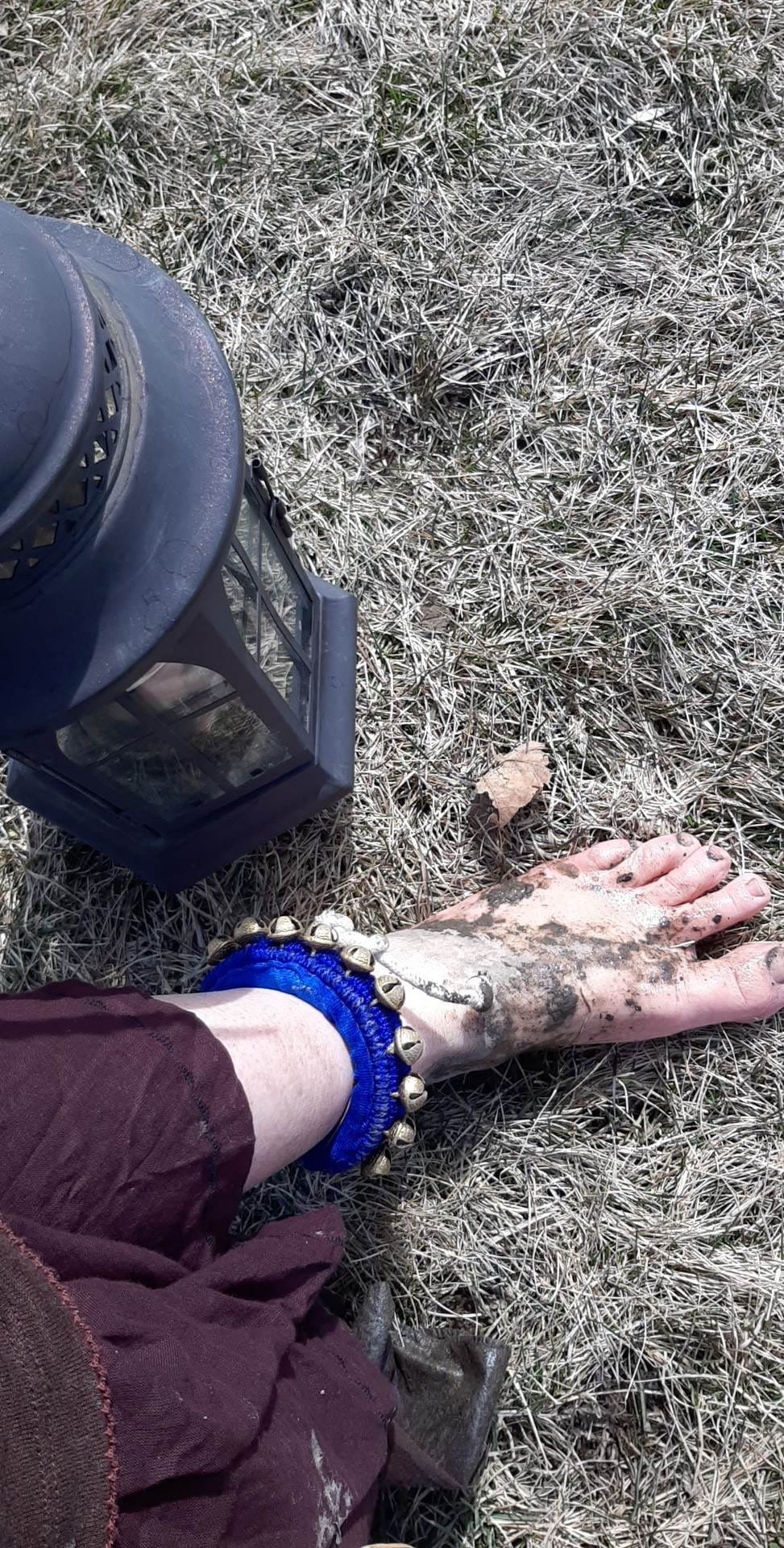There is remarkable value and beauty in mud season. It’s worth the effort to make friends with actual spring, rather than merely the idea of spring. Mud is the place where life begins. Without spring mud season, the rest of the growing and harvest seasons cannot flourish.
There is this tendency to think of spring as green grasses, apple blossoms, sprouts in the garden, trees clad in lovely new leaves, and joyful time spent outside in mild, temperate weather.
And that’s May, my friends. At least, it is here, in the American Midwest. It’s pretty much just May. Every year, I see the disconnect between people’s springtime expectations in March and the lived reality of the dreaded mud season. Much to my winter-loving dismay, the disappointment of actual spring usually gets blamed on winter. For many years, I merely resented that. I resented mud season for being the dreary, useless replacement for my beloved bright winter days. I resented the wet and the chill and the mold. I resented the lack of good snow for winter outings and the damp chill that seeps into my bones to make me feel colder than I ever feel at a subzero sunrise. I resented having to wait to plant most of my seeds. I resented the resentment of the people around me. In short, I could see nothing whatsoever of use in mud season. It was an unavoidable bridge between the glories of deep winter and the life-giving joys of full spring. It was just a miserable purgatory between delights.
Boy, did I have some important lessons to learn.
As I write this, I figure that we’re about five weeks away from most trees leafing out, though there are a few intrepid trees out there now putting on some tenuous little leaves and catkins. We should start seeing the first magnolia blossoms in two or three weeks. Sheltered woodland wildflowers (such as trout lilies) will be peeking up soon, too. We have had scilla and snowdrop in the garden since mid-March, and the bigger spring bulbs are establishing healthy looking leaves. Crinkled rhubarb leaves are unfolding about a foot above the ground. Crocus beds are a riot of color against still-dead grasses and brown leaf litter. There are signs of the plants waking.
All that said, most days are grey, the grass is brown, the mud is cold beneath my feet, and it has been freezing too often to get to the joys of spring planting. Every morning seems to tell me to wait just a little longer. Just a little longer.
This has the net effect of making us think that mud season is merely a waiting period — a bridge that will take us to the good stuff if we’re just patient enough. In that mindset, we end up missing some of the best of what mud season has to offer,
LESSON #1
As with the myth of prehistoric “land bridges” merely having connected lands that we now value — rather than having been important land with value and use of their own — seeing mud season as only the bridge between winter and spring puts us in the wrong mindset for appreciating its value.
Birthing is a messy thing. It’s mud and blood and feces and screams. It’s agony and grit. It’s wet and awful and utterly miraculous. It’s dams breaking and the earth cracking open. It brings the birth giver to the brink of death in the act of breathing life into being.
Similarly, the glories of what we think of as spring have their start in the cold, icy filth of river banks, muddy snow melt, standing water, and the decay and feces of the previous year and winter. These things are what create the conditions to nourish emerging bulbs, insects, and seeds waiting to germinate.
Crucially, too, we need for old things to die back and decompose in order for new things to have room to flourish. The death and refuse of previous seasons put nutrients back into the soil, and the dying back clears the way for the new. Taken as a metaphor for processing our own losses and creating space for new growth, mud season can be a powerful time to contemplate what we are leaving behind and what we plan to nurture in our next cycles of growth.
…but first we must clear the way.
LOSS IS A FERTILIZER:
leave room to grow
I worked on this piece during mud season of 2020, after having broken a finger (among other injuries) in a nasty fall. I had to fall back on recomposing previous works, and, in so doing, I found new meaning in old things and came to better understand my own artistic expression. As 2020 went on to be the most challenging of years for me so far, I’m grateful to the foundations that were laid with this piece — and I’m glad that it didn’t sell. The more that I lose, the more that I see in this piece. I come back to it time and time again.
I created intentional pathways of growth, but, crucially, I also left negative spaces in the piece. They’re like the fertile mud and the seemingly-barren fields. They are the room to grow.
LESSON #2
Conscious preparation is foundational to healthy growth. Metaphors abound, but, from an artistic point of view, we can consider conscious preparation to be like preparing a canvas or conditioning clay before we begin to create. That foundational work will impact everything that comes after it.
Mud season is the time for setting the stage, for preparing for the curtain to open. We take what winter made of autumn’s harvest of summer’s growth after the previous spring’s labor. It’s the moment of quiet when, after learning and practicing a fresh composition, we center ourselves and take a deep breath before singing a new song. It appears to be still, but everything is warming up, everything is getting into position.
The earth is about to sing.
As it pertains to creativity and spiritual growth, we have a tremendous opportunity to do work right here and now — in the mud — that will serve us well in the seasons to come. We can allow the detritus of previous seasons to fall back on its own, or we can consciously work to build new foundations. We can take a look at what has worked well to serve our needs and path, and we can do the work of culling systems and ways of thinking that do not work well for us. We can take the remains of work that we’ve done and lessons we’ve learned, and we can build them directly into fresh and intentional foundations to support the work that lies ahead for us.
What are you planning on growing this year?
What are you planning on learning?
What do you hope to build?
What bonds do you seek to forge?
How will you better support your communities?
What will your work this year require?
How will you expand your creative expression?
What must you purge in order to make room for fresh work?
Who do you seek to touch with your work?
The answers to these sorts of questions will tell you what foundations you need to lay now. Mud season is the time to start the work of growth again. Before the first seed is planted, before the first fruits can come into being, we have the opportunity to clarify what we want to create and set ourselves up for success.
LESSON #3
Life continues, and growth will happen with or without our input. We can nurture it, feed it, give it room, and give it direction if we choose to do so. Rather than waiting and bemoaning this time, we can take the opportunity to influence what comes next. In a literal sense, that means preparing for spring gardening; in a metaphorical sense, it means serious introspection and honest work about our needs, goals, and intentions. The alternative is to sit back and let things unfold without our input and guidance.
The earth wakes again to life every spring, whether or not we offer direction.
New life grows around whatever was left behind. New growth feeds on whatever it finds.
With all of this talk of clearing away and purging, it’s important not to lose sight of the fact that mud season is also the time of first awakenings. Pussy willows, early bulbs, mosses, insects, and migrating birds brave the tumultuous winds and occasional snows in their inexorable first emergences of spring. It might not be the bright green explosion of life that May is, but it is not without symbols of hope.
Mud season whispers to us to look more closely.
Things that look dead and barren may be teeming with life, but we will miss it all and deprive ourselves of the beauty of it if we don’t lean in and really look. Intentions are deeply important in these few weeks.
Mosses prepare to release spores with what look like tiny delicate “flowers” on reddish stalks.
I recently leaned in to look at a memorial stone near standing water. The trees all around were leafless, and the marsh plants were papery and brown, but a tiny swarm of young insects hovered over the cold standing water. Snow melt and muddy marsh land were already spawning new life.
LESSON#4
Don’t forget to celebrate! Yes, celebrate the mud! There is value in celebrating every step of the way. Celebrations help us to recognize how we build on our progress, and they also help us retain the joy in the work.
After all of the purging and preparing, we have those things that we’ve kept and the seeds that we intend to plant and nurture for the growing seasons ahead. We can take the things that we’ve mended and created during winter rest and repair, and we can propel them forward with greater confidence. This is precisely because we now have that good, fertile ground for their foundation — and because we’ve embraced the mud.
Among other things that we intend to build, this intentional work of mud season includes returning back to hone old skills and branching out into new variations. This is worthy of celebration in its own right, as it honors your own past work and growth, but it can also be easily worked into springtime celebrations. All of the new work that I’ve done recently has been built on the confidence and skill of my previous work, and these successes encourage me to try new things, building on what I already know. It gives me a good footing for stepping into creativity and inspiration. Every holiday that we celebrate this year will be more consciously connected to previous holidays, and that feels deeply good. The beeswax that pooled and cooled in the river will be used again in future candles. I look forward to that. I plan to grow more mullein for future candles, now that I know how to make them. The skills that I developed in purpose-built candle making and weaving for Ostara will serve me in future projects throughout the year — and that’s worth appreciating.
Left: my first project with backstrap weaving, using my own handspun linen and wool
Center: working with a friend to re-learn pysanki from my childhood and imbue fresh meaning
Right: my first mullein candles, set in a beautiful piece of bark that had been a gift
Some friends and I combined spring equinox celebrations and our Year of Aun work of clearing away old, destructive ways of being and building new and better ways. We keep coming back to themes of purging and breaking down the systems that aren’t working for us in order to make way for fresh foundations. This also offers room for growth, allowing us space and energy to nurture both the things that we choose to keep in our lives and the things that we’re choosing to build anew. It felt like it merged beautifully with Ostara and mud season, so we consciously incorporated Aun symbols on our feet, on the eggs, in the candle, and in the mud itself.
Like seeds that are germinating and sending their roots into fresh, rich, damp, fertile soil, we are feeling our way into the best spaces to nurture ourselves and our communities. We are bonding with the earth and with one another. It’s a messy, difficult, sometimes unpleasant process, but… that’s how we birth life and goodness into this world. It all starts in the mud.



For more information on the Year of Aun, check out https://nordicanimism.com/aun-2023















